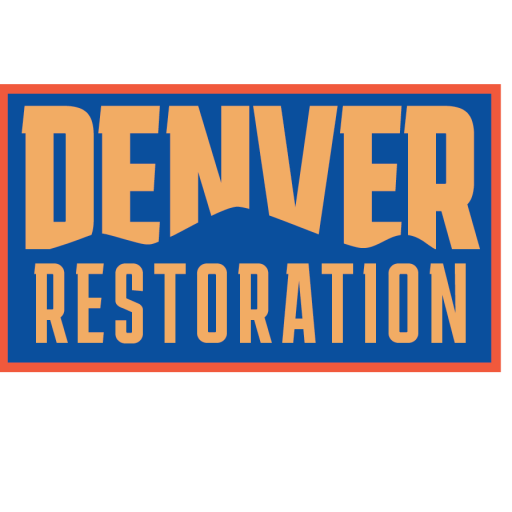Understanding Lead Abatement
The first step to gaining confidence in lead abatement is understanding what it entails. Abatement is a term often used in the restoration industry to refer to techniques designed to control the risk of lead, a potentially hazardous material. It primarily involves removing or encapsulating lead-based paint, which can pose significant health risks if mishandled. If your home was built before 1978, it is highly likely that lead-based paint was used.
Lead abatement is crucial for ensuring a safe living and working environment, especially for children and pregnant women who are more susceptible to the harmful effects of lead. It is not a task to be taken lightly, which is why we’re determined to provide you with some practical lead abatement tips on how to navigate this potentially hazardous situation.
Professional Assistance
When it comes to safe lead removal, hiring a certified lead abatement professional is advisable. The Environmental Protection Agency (EPA) guidelines emphasize the importance of using certified contractors to ensure that lead removal is done safely, effectively, and in compliance with safety regulations. This helps avoid unnecessary exposure and contamination.
Preparation is Key
You should conduct an initial test to confirm the presence of lead in your paint. Some DIY test kits are available, but you may also have a lead inspection and risk assessment performed by a certified professional. This initial step is crucial as it will define your lead abatement process.
Essential Protective Measures
During the abatement process, it is vital to take the necessary protective measures. These precautions include wearing suitable protective clothing, using appropriate lead-safe work practices, and ensuring the work area is properly sealed off from the rest of the house. The link here provides an account of personal experiences and advice on protective measures, demonstrating the practical importance of these precautions.
Specific Lead Abatement Techniques
There are several techniques used in lead abatement, including paint removal, encapsulation, enclosure, and replacement.
– Paint removal involves using specialized methods to remove lead-based paint from surfaces.
– Encapsulation is often a more straightforward method, using a special coating to seal the lead-based paint.
– Enclosure entails covering lead-based paint with a new surface such as drywall or paneling.
– Replacement involves removing the lead-painted component and replacing it with a new one.
Post-Abatement Verification and Clean-up
After the lead abatement process, ensure that a thorough clean-up is completed by a professional to remove all dust and debris. It’s also advisable to conduct a post-abatement inspection and clearance testing. This verification process is crucial in ensuring that your home or workplace is safe and free from lead. Verified assurance from a certified professional is certain to boost your confidence in lead abatement.
Staying Informed
One of the best ways to grow confidence in lead abatement is to stay informed about lead poisoning and its prevention measures. Regular reading and research, as well as consultation with professionals, can really help. For instance, this Reddit thread provides useful insights on managing lead paint in older homes.
Our related post on gaining your space free from mold fears also offers tips that can be applied in lead abatement. It’s all about understanding the risks, taking the necessary precautions, and relying on professional help when needed.
Take those first steps towards making your home safer today. By following the tips shared in this article, you’ll find your confidence growing as you navigate the process of lead abatement. Remember, it’s about safeguarding your health and that of your loved ones.
When Should You Consider Lead Abatement?
While plenty of homeowners are aware of lead-based paint’s dangers, not everyone is certain about when they should consider lead abatement. Simply having lead-based paint in your home does not pose an immediate threat. It becomes a concern when the paint starts to deteriorate, chip, or peel, creating lead dust or flakes that can easily be ingested or inhaled, especially by children or pets.
Another scenario where lead abatement would be necessary is during home renovation or remodeling projects. Disturbing lead-based paint by sanding, drilling, cutting or demolition can create hazardous lead dust or chips. In such scenarios, hiring a professional abatement team ensures the safety of everyone involved and the subsequent usability of the renovated space.
Legal Obligations and Regulations
Regulations surrounding lead abatement are stringent and wide-ranging, encompassing both federal and local laws. The Environmental Protection Agency (EPA), the Department of Housing and Urban Development (HUD), and the Occupational Safety and Health Administration (OSHA) all have guidelines and regulations pertaining to lead abatement. It’s essential to be familiar with these laws to ensure that you’re compliant.
Health Risks of Lead Exposure
Understanding the potential health risks associated with lead exposure can drive home the importance of adequate lead abatement. High levels of lead exposure can lead to severe health problems, including damage to the brain, kidneys, nerves, and blood. Children and pregnant women are at heightened risk. Symptoms of lead poisoning can be difficult to recognize as they often appear as other common illnesses. However, the long-term effects can be devastating, including learning disabilities and behavior problems in children. The dangers of lead exposure are not to be underestimated.
Financial Aspects of Lead Abatement
The financial aspect of lead abatement can be overwhelming for many homeowners. Abatement procedures can be costly, depending on the size of the space and the complexity of the work. However, some financial aid programs can help offset these costs. For example, the Ohio Department of Development offers a Lead Safe program that provides financial assistance for lead hazard control activities.
Keep in mind, though, that the cost of not addressing lead hazards can be significantly higher, considering both potential health impacts and the potential decrease in your property’s value if lead hazards are not addressed. It’s essential to view lead abatement as an investment in the safety and health of your occupants and the long-term value of your property.
Handling Lead in Paint, Soil, and Water
Lead hazards extend beyond just paint. Lead can also be found in soil and water. If your home was built before 1978 or is near a road that was heavily used prior to the ban on leaded gasoline, your soil might have lead contaminants.
Water can also be a source of lead exposure, particularly if your home has lead pipes or fittings, or if your water supply travels through lead service lines. Ingesting lead-contaminated water or using it to prepare food can pose risks.
Knowing the Right Time to Call a Professional
Homeowners should remember that it’s okay and often necessary to bring in a professional for lead abatement. If you’re dealing with deteriorating lead-based paint, undertaking a renovation or remodeling project that will disturb lead-based paint, or if you have just discovered lead in your home, you should reach out to a certified professional.
Our experienced team at Denver Restoration is here to help you navigate through this process, providing expert guidance, efficient service, and peace of mind.
Take the first steps towards a safer living environment by understanding, preparing, and acting against lead hazards in your home. Make sure you rely on professional help when needed to ensure your actions are effective in creating a lead-free, safe space for you and your loved ones.

